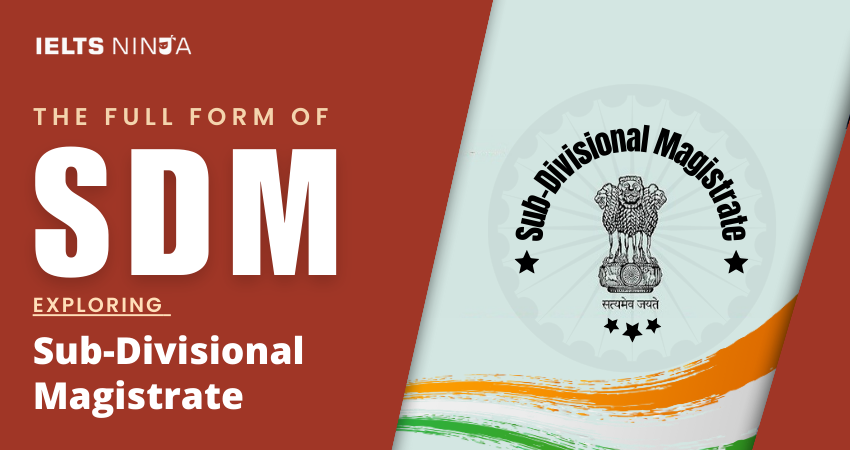In the realm of government administration and civil services, The full form of SDM stands for Sub-Divisional Magistrate. An SDM is a key administrative officer responsible for overseeing a sub-division, which is a smaller administrative unit within a district or county. The role of an SDM is vital in maintaining law and order, implementing government policies, and providing essential public services. In this comprehensive guide, we will explore the details of SDM, their functions, responsibilities, and significance in the administrative hierarchy.
What is an SDM?
A Sub-Divisional Magistrate (SDM) is a government officer who serves as the administrative head of a sub-division, which is a geographical area within a district or county. SDMs are typically appointed by the government and play a crucial role in the functioning of the local administration.
Functions and Responsibilities of an SDM
SDMs have a wide range of functions and responsibilities, including:
Law and Order:
Maintaining law and order within the sub-division by coordinating with the police and other law enforcement agencies.
Revenue Administration:
Overseeing revenue collection and land administration within the sub-division.
Disaster Management:
Managing and coordinating disaster relief and response efforts in times of natural calamities.
Election Administration:
Conducting and supervising elections at various levels, including local elections.
Development Initiatives:
Implementing government development programs and schemes in the sub-division.
Licensing and Permissions:
Granting licenses and permissions for various activities, including public events and construction projects.
Magisterial Powers:
Exercising magisterial powers, including maintaining peace, handling legal matters, and addressing public grievances.
Crisis Management:
Managing crisis situations such as communal tensions or civil unrest.
Public Services:
Ensuring the delivery of essential public services such as healthcare, education, and sanitation.
Judicial Functions:
Some SDMs also have judicial functions, such as adjudicating disputes and settling legal matters.
Qualifications and Appointment – SDM
To become an SDM, candidates typically need to meet certain educational and eligibility criteria set by the government. The qualifications may vary from region to region, but they often include a bachelor’s degree from a recognized university and success in competitive civil services examinations. SDMs are usually appointed by the government or relevant administrative authorities.
Also Read: Best online IELTS coaching & training academy
Significance of SDMs
SDMs hold a significant position in the administrative hierarchy for several reasons:
Local Administration:
They are the face of the government at the sub-divisional level, ensuring effective governance and service delivery to the local population.
Law and Order:
They play a vital role in maintaining peace and order, particularly in areas with diverse communities and potential for disputes.
Development:
SDMs are instrumental in implementing development programs and policies, contributing to the region’s progress.
Crisis Management:
They are often the first responders in crisis situations, providing leadership and coordination during emergencies.
Interface with the Public:
SDMs serve as a crucial interface between the government and the public, addressing grievances and ensuring the public’s voice is heard.
Conclusion
A Sub-Divisional Magistrate (SDM) is a key administrative officer responsible for overseeing a sub-division’s governance and administration. Their multifaceted role includes maintaining law and order, revenue administration, disaster management, and development initiatives. SDMs are instrumental in ensuring effective governance and the delivery of public services at the grassroots level.








